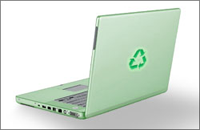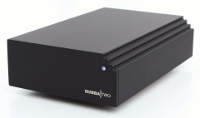|
Commercial
Support |
||||
SoHo solutions in a harsh world
Let's face it, IT is not what you could call the greenest industry in the world. Virtually everything we do requires resources, whether that is in the manufacture of the systems, or electricity to run them, up to the cooling systems to stop them overheating.
Like every other company out there, we have had to make some tough decisions during the economic collapse of 2008/9, so you would think that updating our IT infrastructure would be at the bottom of the list. Take a look at the mini articles below, to see how we met these challenges and came out of it better.
Assessing your IT challenges

In fact, we investigated this at great length as a way of reducing costs, without reducing our ability to support clients. Every single piece of kit on our network was looked at, from the cabling and routers, through the UPS systems and right up to the servers we use. This involved putting an electricity meter on everything, checking in details the specifications and ruthlessly looking at what could be done away with.
First step in any assessment is agreeing that their are no sacred cows. Nothing, no matter how pretty is any good to you if you are out of business. Now as a bunch of self confessed geeks, that is a hard thing to do, but essential if we were to be impartial.
Testing doesn't have to be expensive
Once we knew what we had, some obvious gains immediately came to light. Our test system (used for everything from testing Windows 7 Beta to data recovery for clients) had a massive 24 inch CRT on it and our engineer had a bad habit of leaving the PC on and the monitor in standby at night. Not a big deal you might think, but a PC with a 330 Watt power supply, plus monitor, 24-port managed switch, Wireless Access Point, plus anything he was testing and you can just imagine how much electricity that is wasting every day.
That was easily solved by formally adding the shutdown of the test rig to our business practices and installing a Bye Bye Standby plug on the whole test rig. Not only did this mean that we could shut the PC and monitor down using the remote control but we could also power off all the peripherals as well. We expect this to easily pay for itself in the first 12 months.
We didn't stop there though. We have since replaced the 24-port Switch with a much smaller 8-port, which uses 70% less electricity and still provides all the ports we need, plus replaced the CRT with a 17 inch LCD, recycled from our old server.
Honey, I shrunk the server
Next thing we looked at was our server, and specifically what we actually use within the office. Sure, we use it as the internet gateway, Backup system, DHCP, print server and file storage, but did we really need something with that much memory and CPU power? It also needed some upgrading, as the network ports were only 100MBit and the disks were due for routine replacement.

By analysing the server statistics, it was easy to see that the processor rarely broke a sweat and the system was idle for large chunks of the day, especially overnight and at weekends, when it was on, but not really doing much. Coupled with the expense of all those hard drives in a RAID array and it was clear we needed to find an alternative solution. After some searching, we came across a crazy little box call Bubba2.
This fully functional and capable Linux server was little bigger than a hard drive enclosure, used a tiny 9 watts of electricity and was more than capable of dealing with almost all of our day to day needs. We ordered one, with an external storage box as well, giving us 2TB of disk storage and with very little effort at all, we replaced the entire server in a weekend, taking the electricity consumption down from 600W to 18W. Since installation, this little server has impressed us so much, we have already installed 3 more for clients and are using it as the basis of our forthcoming store site, where we hope to become the first official reseller in the UK.
Another beauty is it is a headless system, so we freed up parts, such as RAM and a monitor to re-use in other areas of the business.
The one outstanding need we want for this little toy (WiFi AP) is due for release in the near future as an expansion option, and that will be one more piece of equipment done away with.
Virtualisation in the real world
If you have ever played buzz word bingo, or read any of the IT press in the last couple of years, virtualisation is all the rage.
The theory is you install multiple virtual computers on one set of hardware, sharing the resources and reducing the hardware costs, while getting better efficiency out of your equipment. Sounds wonderful, but does it work?
Some of our clients require specific setups for accessing computers remotely, plus we often test things in multiple versions, such as Linux and both 32-bit and 64-bit software, just for clarity. This often meant multiple computers in a rack, testing each one at a time, or fiddling around with changing hard drives all the time.
With the technology from multiple vendors reaching a mature state, where ordinary mortals can use them, we decided to evaluate 3 of them: VMWare, Parallels Workstation and Sun Microsystems VirtualBox to test their suitability as workstation virtualisation products. Server virtualisation is a whole different ball-game.
VMWare is probably the recognised Industry leader and we quite like their product. Performance was good, reasonable level of support for various OS versions as you would expect from this company, the team we had contact with were enthusuastic, friendly and knowledgeable, but for a small company like us, the costs were just unrealistically high at the time we evaluated them, so we discarded this one. Pity really, as this one would be a tough act to follow.
Second up was Parallels Workstation. Again, a nice product and considerably cheaper than VMWare, but we found some aspects of the suite worrying. At the time of our evaluation, they had limited support for any of the newer versions of Linux, no 64-bit support, no real idea of a release schedule to resolve our concerns despite extensive discussion by email, but we decided to stick with this anyway. Extensive efforts by Parellels support couldn't get their integration tools working with any of our Linux installs, time drift on the clock was horrendous and performance from with the guest instance could be poor at times, even on a quad core system with 8GB of ram available to both. The shortcomings finally got the better of us and we abandoned our licensed copy just a couple of weeks after paying for it. Writing down the license cost was cheaper than an engineer smashing the computer in frustration.
Finally came VirtualBox. Firstly this one is completely free, so that was attractive and very easy to install, but free often means low quality. Our extensive work with Sun over the years meant we had quite a lot of faith in the product and it proved to be very well founded. So far, we haven't found anything this little thing can't do, except make the tea. Performance is seamless with our systems, it happily handles 32-bit Linux and 64-bit Windows 7 guest systems, running on a 64-bit Windows Vista system, doesn't get too upset when Windows update reboots the system with a virtual machine running, can cope with VPN connections from the guest system, without interrupting the parent machine. All in all a fantastic product.
Whatever your IT requirements, Riktek can provide the friendly and helpful service you are looking for, so please call us on 01962 886777 or email to: sales@riktek.co.uk You have nothing to lose by asking and perhaps a lot to gain.
